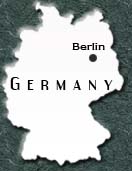Festival and rain closes Berlin's Tempelhof Airport
 Berlin - Rain marred an aviation festival on the last day of operations at Berlin's fabled Tempelhof Airport on Thursday, raising the risk that some planes might be stranded on the ground when the airport shuts.
Berlin - Rain marred an aviation festival on the last day of operations at Berlin's fabled Tempelhof Airport on Thursday, raising the risk that some planes might be stranded on the ground when the airport shuts.
The airport was once the entry point for 2.3 million tons of airborne relief during the 1948-49 Berlin Airlift.
Three veteran planes, which require ideal weather to get airborne, were stuck on the ground as night fell, with cold rain falling on the city.
Airport spokesman Ralf Kunkel said that if the rain did not stop, they would not be able to depart by the midnight deadline. "All operations will cease at midnight," he said.
That would mean the planes would have to be taken to another airport on semi-trailer trucks.
A municipal spokesman, Marko Rosteck, said it was theoretically possible for owners to apply for a special exemption to take off Friday from Tempelhof when it was no longer legally an airport, but added that this was unlikely.
The airport opened in 1923, became an icon of 20th century design, secured West Berlin's post-war survival and eked out its last years catering to business flights, claiming honours as the world's oldest airport.
It is to be replaced by a big airport in Berlin's green belt.
Supporters fought a vain battle to keep loss-making Tempelhof, one of the city's three airports, open. A hundred of them blew whistles and waved banners outside Thursday in a last protest vigil in the dusk.
Aviation enthusiasts flew to Berlin Thursday for last landings and takeoffs from the airport, and city radio and TV stations made emotional broadcasts from its lofty concourse.
The last scheduled flight was to be a Cirrus Airlines domestic departure at 9:50 pm (2050 GMT).
Guests from Cologne flew in aboard a chartered Airbus A319 jet and another plane came from Riga, Latvia, an airport spokesman said. Music and celebrations were to culminate at midnight with the last takeoff.
The honours were to be shared by two historic propeller planes taking off simultaneously: a US-made Douglas DC-3, as used in the 1948-49 airlift, and a German Ju-52, a type used as an airliner from 1932 onwards by Lufthansa.
Georg Kohne, 51, a Lufthansa pilot assigned to the Ju-52, said, "It's the saddest day of my career."
Unlike modern airports, Tempelhof is situated in the midst of multi-storey apartment blocks, just four kilometres from the city centre. Tourists still come to look with awe at its vast Nazi-era buildings.
Berlin has yet to decide what to do with the airfield, which is huge but too short for big airliners. Questions also remain about the fate of the curved terminal, built in 1934 to replace the original. At 1,200 metres long, it is seen by many as a classic of 1930s architecture.
The authorities want Tempelhof and newer Tegel Airport closed, so that all airlines land outside the city at Schoenefeld Airport, which is being rebuilt and will be renamed Berlin Brandenburg International (BBI) in 2011.
Tempelhof's finest hour was during the Airlift, when Soviet authorities blocked road, rail and canal transport to West Berlin. The Allies flew coal and food to Berlin's 2.2 million people for 320 dramatic days.
Unable to prevail, the Soviets called the blockade off. (dpa)